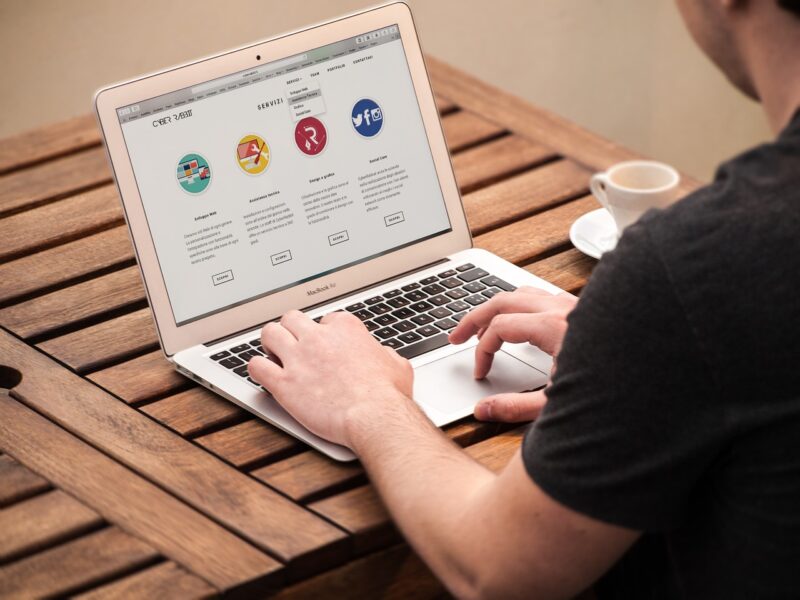Designing a Website with Accessibility in Mind: Inclusive Tips for Better Usability
November 13, 2024

In the digital age, creating a website is not just about aesthetics or functionality. It’s about ensuring that everyone, regardless of their abilities or disabilities, can access, interact with, and benefit from the information provided. This article explores the principles of accessibility in web design, offering a comprehensive guide for developers, designers, and content creators to create an inclusive online experience.
1. Understanding Accessibility: Why It Matters
Accessibility refers to the design of products, devices, services, or environments for people with disabilities. Web accessibility is crucial as it ensures that all users, including those with visual, auditory, physical, and cognitive disabilities, can use and benefit from online resources effectively. Here are some key reasons why accessibility matters:
- Legal Compliance: Many countries have laws and guidelines, such as the Americans with Disabilities Act (ADA) in the U.S., that require online content to be accessible to individuals with disabilities.
- Increased Audience Reach: By making your website accessible, you open your content to a wider audience, including individuals with disabilities, elderly users, and those with temporary impairments.
- Improved User Experience: Accessible web design often leads to an enhanced experience for all users, including better navigation and clearer content presentation.
The importance of designing for accessibility cannot be understated. Understanding these principles helps foster empathy in design, ensuring that the website is usable by everyone, not just a select few.
2. Key Principles of Accessible Web Design
The Web Content Accessibility Guidelines (WCAG) outline several principles for creating accessible web content. The key principles include:
- Perceivable: Users must be able to perceive the information being presented. Ensure that text alternatives are provided for non-text content, and offer subtitles for videos.
- Operable: Users must be able to operate the interface. All functionalities must be accessible via a keyboard, and users should have enough time to read and use content.
- Understandable: Information must be understandable. Present information in a clear and simple language, and ensure that the website operates predictably.
- Robust: Content must be robust enough to work with a variety of user agents such as browsers, assistive technologies, and other tools that users might employ.
By adhering to these principles, you can construct a website that supports a diverse group of users effectively.
3. Tips for Designing an Accessible Website
Here are some actionable tips for implementing accessibility into your website design:
Use Alt Text for Images
Every image on your site should include alternative text (alt text). This text describes the image’s content, allowing users with visual impairments to understand the context through screen readers. Be concise and descriptive, capturing the essence and purpose of the image.
Ensure High Color Contrast
Make sure your text is legible against the background color. A high color contrast helps visually impaired users and those with color blindness read your content more easily. Use tools like the WebAIM Color Contrast Checker to test your color choices.
Keyboard Navigation
Design your site so that users can navigate using only a keyboard. Ensure that all interactive elements (links, buttons, forms) are reachable and usable through various keyboard shortcuts. Users should be able to move through items logically and intuitively using the Tab key.
Provide Text Alternatives for Media
For video and audio content, include transcripts and captions. This allows users with hearing impairments to access the information. Make sure that the audio content of videos is available in a format that can be read by assistive technologies.
Clear and Simple Language
Use straightforward language and avoid jargon. For complex ideas, break down information into smaller, digestible sections. This practice makes your content more understandable for individuals with cognitive disabilities, as well as non-native speakers.
Design Responsive Interfaces
Ensure your website is mobile-friendly and responsive. This means that users should be able to interact with your site easily on a variety of devices, ranging from desktops to smartphones and tablets. Responsive design helps accommodate users with various accessibility needs.
Use Descriptive Link Text
Avoid vague link text such as “click here” or “read more.” Instead, use descriptive text that clearly indicates the purpose of the link, enhancing navigation for screen reader users.
Test with Real Users
Finally, involve individuals with disabilities in your testing process. Gathering direct feedback helps identify areas needing improvement that standard testing might overlook. Real user testing provides insights into the accessibility and usability of your website.
4. Utilizing Accessibility Tools and Resources
A variety of tools can assist in testing and enhancing your website’s accessibility:
- WAVE – A web accessibility evaluation tool that identifies accessibility and Web Content Accessibility Guidelines (WCAG) errors, allowing for corrections and improvements.
- AXE – An accessibility testing tool that integrates well with development environments and offers actionable insights to developers.
- Color Oracle – A color blindness simulator that helps evaluate your color choices for users with different types of color blindness.
- Screen Readers – Familiarize yourself with screen readers like JAWS, NVDA, and VoiceOver to understand the user experience better and improve site usability.
These tools can simplify the evaluation process and promote a culture of continuous improvement in web accessibility.
Conclusion: Making the Web Inclusive
Designing a website with accessibility in mind is not just a technical requirement; it’s a commitment to inclusivity. By implementing the tips discussed in this article, you can create a more usable, enriching online experience for everyone, no matter their abilities. As you embark on your web design journey, remember that investing in accessibility not only benefits individuals with disabilities but enhances the user experience for all, paving the way for a more inclusive digital environment.
Adapting your design strategies and continuously testing your site will ensure that accessibility remains at the forefront, ultimately contributing to a more just and equitable society in the digital realm. By embracing inclusive design principles, you will help create a web that truly serves everyone.








